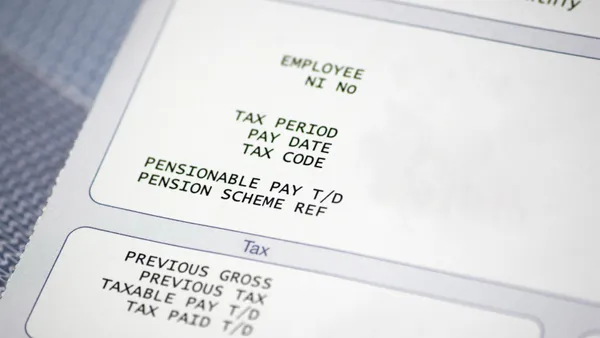The artificial intelligence buzzword has arrived in the learning and development space, and while it comes with all the bells, whistles, and endless possibilities of success for the talent at your organization, it is important for organizations to implement and successfully master adaptive learning first.
In my previous article, I discussed what artificial intelligence and adaptive learning are, how adaptive learning becomes artificially intelligent, and the reasons why it is important to become an expert at adaptive learning—so you can gain a structured set of human-designed rules to build effective collaboration with machine learning technology. But, when it comes to implementing the latest and greatest technology innovations, knowing where to begin can be difficult when you’re trying to stay ahead and maintain a competitive advantage in the L&D industry.
In this article, I will provide tips to point you toward a clearer understanding of adaptive learning, and I will share real-world examples of how adaptive learning is being successfully leveraged today in L&D settings to spark ideas of your own about how you can implement adaptive learning at your organization.
Adaptive Learning Begins with Your Staff
Because one of the key tenets of adaptive learning is personalization, a large part of your adaptive learning strategy should begin with understanding your employees. Depending on the size of your company, create a method—whether by survey, email, or meeting—to collect and analyze key data points that will help inform and improve your adaptive learning plan. One of the principles of adult learning is to “respect your learners” and the same holds true for adaptive learning. Your employees have valuable insight into what they want and need in order to improve their knowledge, skills and performance on the job. Trust in and listen to those insights.
Don’t Hesitate to Lean on Others Who Have Been There
Adaptive learning cannot be mastered in a vacuum. If you know anyone who has experience in adaptive learning, connect with them to learn what works and how they have handled any obstacles. Seek assistance from experts or contractors on best practices and industry standards. Although adaptive learning techniques do not always require technology, organizations often combine them with learning management strategies. If this is the case for you, keep scalability in mind when evaluating your options. Innovations in L&D are constant. Therefore, it is important for your company to adapt learning and development strategies strategies that allow for future growth to support your staff development needs.
Know That You Don’t Have to Start from Scratch
Creating training that is personalized to your employees does not necessarily mean you have to get rid of all the existing materials you’ve spent a lot of time, talent, and effort creating. After you identify staff needs based on the information you collect from them and compare that to what you already have with the gaps you have to fill, you may discover there are various ways you can adjust, repurpose or still use your existing training materials.
Allow for a Slow Implementation
Implementing adaptive learning calls for a solid change management plan to be in place so that your organization is aligned at every level and executives are bought into it. Prepare for this by creating and communicating structure around what it is, how it will be used, the reason for the change, and the benefits for learning and development professionals, managers, employees, the organization, and customers. Test your rollout of adaptive learning on a smaller group within your company first to fine-tune the process and fix any bugs along the way before implementing it companywide.
Seek Regular Feedback
Just as you want to continuously improve staff learning and development, the same goes for your adaptive learning strategy. Create a channel for people in your company to provide feedback on what is and isn’t working so you can gather helpful information to make improvements or minor adjustments as necessary.
Where Adaptive Learning Is Being Used Successfully Today
K-12 Schools
Usually when we picture adaptive learning, we may envision high-end technology working behind-the-scenes as a learner is immersed in an online course. In a school setting however, even the act of tutoring can be considered adaptive learning. Here’s why: Because the instructor is helping a student understand a difficult concept, the instructor is likely to alter their hints and feedback in response to verbal and nonverbal cues from the student. This results in shifting the lesson flow to:
- Accommodate questions and any lingering confusion
- Reference current events or known student passions and preferences
- Change activities in the moment (e.g. the student is having trouble, so walking them through the assignment instead of asking them to work alone)
The key words mentioned above—alter and shifting—reveal that the instructor is adapting to the learner. Therefore, tutoring is considered an adaptive learning experience.
Universities
Universities are also making strides with the use of adaptive learning. The University of Mississippi uses learning courseware to address knowledge gaps they often see in their first-year writing students to help them better grasp rhetorical concepts. They polled faculty on the gaps they’ve observed in students and asked them what they didn’t want to cover in the classroom but knew students needed to learn. The data they received enabled them to build highly engaging micro modules on basic content and rhetoric strategies.
………...
As a result, the less prepared students embraced the modules to learn more, the more prepared students used the modules to refresh their existing knowledge, and the instructors were able to spend their time on more valuable activities.
What we can learn from adaptive learning in this example is that students’ engagement levels increase, they have more control over the way they learn and their path ahead. They may be required to complete XYZ course, but how they go about it is, to some degree, up to them.
Retail
Another example of adaptive learning can be used in the world of retail. Let’s say you hire a new but seasoned retail employee who will be working in an environment where upselling is an important skill and incentive in their role.
During onboarding, the new employee completes an assessment and tests out of several courses. They are directed to a course on upselling which they take and successfully complete. Then, based on their role, region and store number, the system automatically delivers micro-learning content on how to upsell specific items that are only available in those stores.
This is an example where technology does come into play and gathers important data behind the scenes in order to create a highly targeted, adaptive learning experience.
About Matthew Brown
Matthew Brown is the VP of Learning and Brand Success at Schoox. Matthew has 15+ years in IT, HR, Learning & Development, and Talent Management, across multiple industries, with a majority of that time being focused on the hospitality and restaurant industry. Matthew brings his unique blend of technical skills to the world of HR and Training, allowing for an innovative approach to the integration of people, processes, and tools. Matthew has led numerous training initiatives, stood up complex HR and IT Enterprise SaaS Solutions and led countless program rollouts. His passion for Learning & Development combined with a unique blend of technical and business expertise allow him to bring a fresh take on the business of People Practices. In his spare time, Matthew enjoys volunteering at several community non-profit organizations and spending time with his family and pets.
About Schoox
Schoox is the only modern, cloud-based learning and talent development platform designed to unlock employee potential and accelerate business results for even the most complex company structures. Founded in 2012, the company’s six core solutions solve a combination of human capital management challenges by combining Learning Engagement, Content Curation, Social Collaboration, Performance Management & Succession, Career Development, and Business Impact into one unified platform. Today, Schoox empowers excellence in learning and talent development for 10 million users across 120 countries in companies like Subway, Kia, Phillips66, Red Lobster, Celebrity Cruises, First Watch, Cheesecake Factory, Frontier Airlines and more. Visit https://www.schoox.com/ to learn more.










